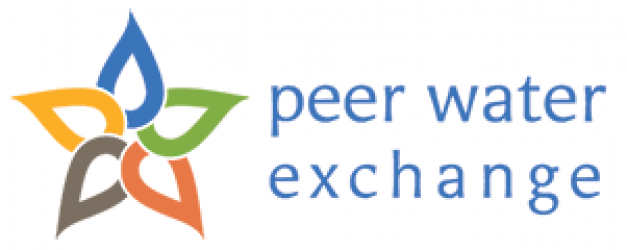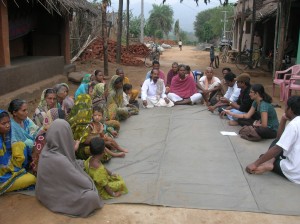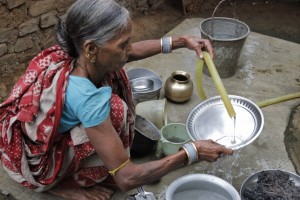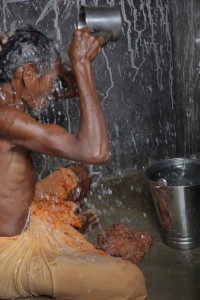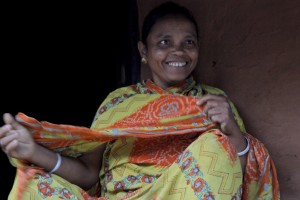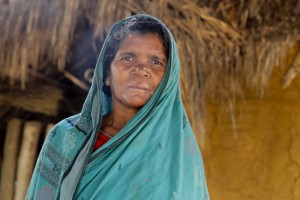As a Program Coordinator for Agua para la Salud in Nebaj, Guatemala I had the rare opportunity to visit Agua para la Vida in Nicaragua. APLV has completed over 50 water and sanitation projects all over Nicaragua with offices located in Managua and Rio Blanco. The purpose of my visit was to learn not only about their past and present projects but to familiarize myself with the extensive organizational network that APLV has constructed to address all aspects and issues of their projects.
During my five day stay in Rio Blanco I had the opportunity to visit three nearby project sites with various specialists from Agua para la Vida, local members of water committees, and a volunteer photographer from PhotoPhilanthropy, Jon Polka. (Photos provided by Jon Polka, photo-philanthropist: APLV Photographs – GIF Pics) Commonalities between the sites were easy to diagnose as all villages had few economic resources and were extremely rural and disperse which lead to the great need of a reliable and nearby water resource and sanitation facilities.
Day One: Tri-Community Water System
The first site we visited was located two hours from Rio Blanco and is a current project site serving the three communities of Quirragua, El Carmen, and San Isidro (111 families in total). Upon arriving, we hopped on horses waiting for us at the entrance of San Isidro. The horses were necessary for two reasons: the rainy season in Nicaragua creates deep pockets of mud difficult to pass through on foot and the three communities are located several kilometres away from each other with no road access.
This large project began when the community of El Carmen began to look for a water resource in order to provide water for their community. The spring they located was eight kilometres away in the village of Quirragua. It was decided during the initiation of the project to include the village of San Isidro as well to the conduction lines since it is located between El Carmen and Quirragua.
First, we visited the school of San Isidro and met with the local water committee or CAPS (Comité de Agua Potable y Saneamiento or Committee of Potable Water and Health). From their introduction and brief words shared it was clear that APLV has not only formed excellent relations with the community but APVL has also created tight work strategies within the communities. Each CAPS committee not only has a President, Vice President, Secretary, and Treasurer but there are also individuals with the titles of Health Promoter, Environmental Promoter, and a Maintenance Representative. Each of these posts works alongside their APLV counterpart throughout the implementation of the project. The APVL counterpart gives several educational workshops members of CAPS and the community in order to assure the communities knowledge of the project, system maintenance, healthy habits, and environmental care.
After lunch we saddled up to visit the spring site located in Quirragua. CAPS and other community members joined us on our trek to the site and once we arrived it was quite the communal celebration of drinking water from the spring. Overall it was an excellent day spent seeing and learning how the communities and APLV work together.
Day Two: APLV Office in Rio Blanco
The next day I spent some time in the Rio Blanco office where I visited with Esteban Cantillano who is responsible for the monitoring of finished projects, potable water, and overall health of the communities. In other words, Esteban is the maintenance monitor for all of the projects APLV has done and will do in the future. In order to manage his time he dutifully trains CAPS and the community during the realization of the project. Due to content, his trainings are often long and intense yet he tries to make them as fun and interactive as possible. He also believes in teamwork and hones in on this skill development throughout his community trainings. His job can be looked at as the sustainability element of the organization because he does not want a small issue to get in the way of the community having access to water in the future.One lesson Esteban presents to communities is the identification of parts commonly used during the construction of the water system.
Unfortunately Esteban´s job does have major hurdles to overcome. First, he was eager to remind me that his job does not begin at the end of the project. Instead, he feels as though he must keep a close watch on every step of the project to prevent future complications and issues. Furthermore, his job is made even more complicated when members of CAPS change and he has to re-train members. Unlike the other sections of APLV who have multiple employees, Esteban is overseeing every project maintenance issue himself. Additionally, Esteban must travel by public transportation to visit the sites which cuts into his time with each community. Each of these issues boil down to a common concern when it comes to maintenance and sustainability in any NGO: funding.
Escuela Technica de Agua Portable
Next, I visited ETAP- Escuela Technica de Agua Portable or Technical School for Potable Water. The story goes the APLV´s co-founder, Gilles Corcos, began this in-residence technical training course in 1996 after meeting a younger and eager-to-learn Esteban Cantillano. In return Esteban became one of six students to first graduate from ETAP. Currently, the school is comprised of eight recently graduated students from high school and a teacher. Anyone young person from Nicaragua can apply but only eight are accepted on full scholarships. The teachers for the current term (terms last 2-3 years) are a caring and energetic French couple, Denis and Cecile Barea who also share the responsibility of director for APLV. The classes are intensely math focused but this term is also being encouraged to read for fun and taught basic life skills though the influence of their teachers. Students also spend three-fourths of their time with APLV technicians to gain hands-on experience in the field. After students graduate they go on to work in government institutions, other NGOs or APLV. However, APVL cannot give all graduates a job because of the small size of the organization.
Day Three: River Captation Site
On Wednesday we went back into the field to visit an extraordinary open river captation site located in the village of Enea. Like the majority of the villages APLV works with, Enea is a very disperse community but with a very unique situation. For twenty years families in Enea searched for a way to provide water to their homes. Prior to the water system, Enea residents were fetching water from the river between 2 and 4 in the morning because that is when they thought the water was most clean. Since the river was the main water source for the community, many engineering groups did technical analysis on the river and said a captation site could not be done. Enea kept searching. Finally, one day a pastor mentioned an organization he had heard of in Rio Blanco who worked in water projects. Representatives from Enea travelled to Rio Blanco and finally encountered APLV. After a diagnostic study and help in design from Gilles Corcos the community was told APLV could support the construction of their water system. After eight months of hard labour and sometimes working 24 hours a day in shifts, the 102 families of Enea now have water in their homes.
Tubing runs from the initial river captation site to the distribution tanks located several kilometres away. However, before the water reaches the distribution tank it is put through two more filtration processes. First, (left) the water is put into two open storage tanks that have a filtration system of three types of sand and a rock layer. This system is cleaned once a month by members of the community. Then, (right) water is put through a chlorination system. Currently, the community is not chlorinating their water due to lack of access to chlorination tablets. APLV is working with the community and a distributor in Managua on finding a solution to this issue. However, it was found through a water test that the water in the storage tank only contained two coliform bacteria thus proving that the multiple filtration process alone is working to extract the majority of the harmful bacterias.
In my experience I found the residents of Enea to be very proud of the hard work they have put forth to complete their water system and further develop their community. Moreover, they are extremely grateful to APLV not only for their technical support and help funding the project but for the trainings they executed. One of the health promoters in Enea openly shared that because of the trainings the residents of Enea now understand that water fetched directly from the river at any hour is contaminated.
Day Four: Health Education Workshop
On Thursday we paid our final field visit to the community of Carrizal of forty-three families where Health and Hygiene Promoter, Lilian Obando, was giving an educational workshop to the women beneficiaries of Carrizal on the use and management of water. With every project APLV executes a health promoter from APLV gives four health trainings to CAPS members and four to the beneficiaries. Although all members of the community are important to involve, Lilian enjoys having a few trainings for only the women in the community since they are the ones whose lives are directly affected by water. When we arrived at the school at 1pm there was a group of eager women awaiting us. The hour long workshop seemed to be a dynamic and fun experience for all involved. The training included songs, skits, poems, games, teamwork, and lots of participation, smiles and laughter. It was very clear that Lilian´s means of educating communities is fluid from her almost fifteen years working as Health and Hygiene Promoter of APLV.
Additional workshops and responsibilities of Lilian includes but is not limited to teaching beneficiaries how to construct their own latrine, working with local schools, health posts, and the Ministry of Education to provide health classes in schools, home visits to understand economic and social conditions of each family and sometimes helping them locate other local resources such as women´s shelters or homes for the handicapped. The job of the Health and Hygiene Promoter, like all the promoters at APLV, is essential to the holistic approach engrained into the organization.
Before the workshop commenced we joined Lilian to visit a few families who were in the process of installing their water meters. Water meters are an extremely important and useful tool APLV has been using the keep track of water used and therefore how much each family needs to pay. These monthly fees are then deposited into a bank account controlled by CAPS and used when repairs are needed to be made.
Conclusions
In conclusion, my experience with APLV and their welcoming staff was overwhelmingly positive. As noted in this report, APLV has an extensive network within their organization that seems to be functioning with few troubles. Unfortunately my short visit cannot capture this picture entirely. I was unable to personally meet and/or speak in-depth with the Reforestation Manager, Social Promoters, Accountant, National Coordinator, Technical Staff, Masons, and Board of Directors whose jobs are also essential to the success of APLV and the communities in which they work.
A comparison between Agua para la Salud and Agua para la Vida is possible but not without limitations. The main difference between APS and APLV is the size of the organizations. APLV has over double the staff of APS and therefore is able to hone in on certain topics more than APS. However, the main purpose, goals, and methodology of APS and APLV are strikingly similar: to organize and work with local, rural populations in order to provide reliable water sources and sanitation facilities to communities and schools while also educating the beneficiaries on environmental and health impacts as well as maintenance concerns.
